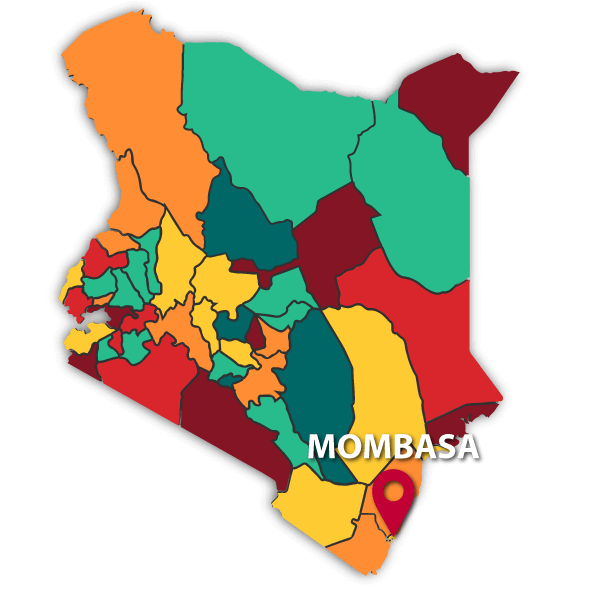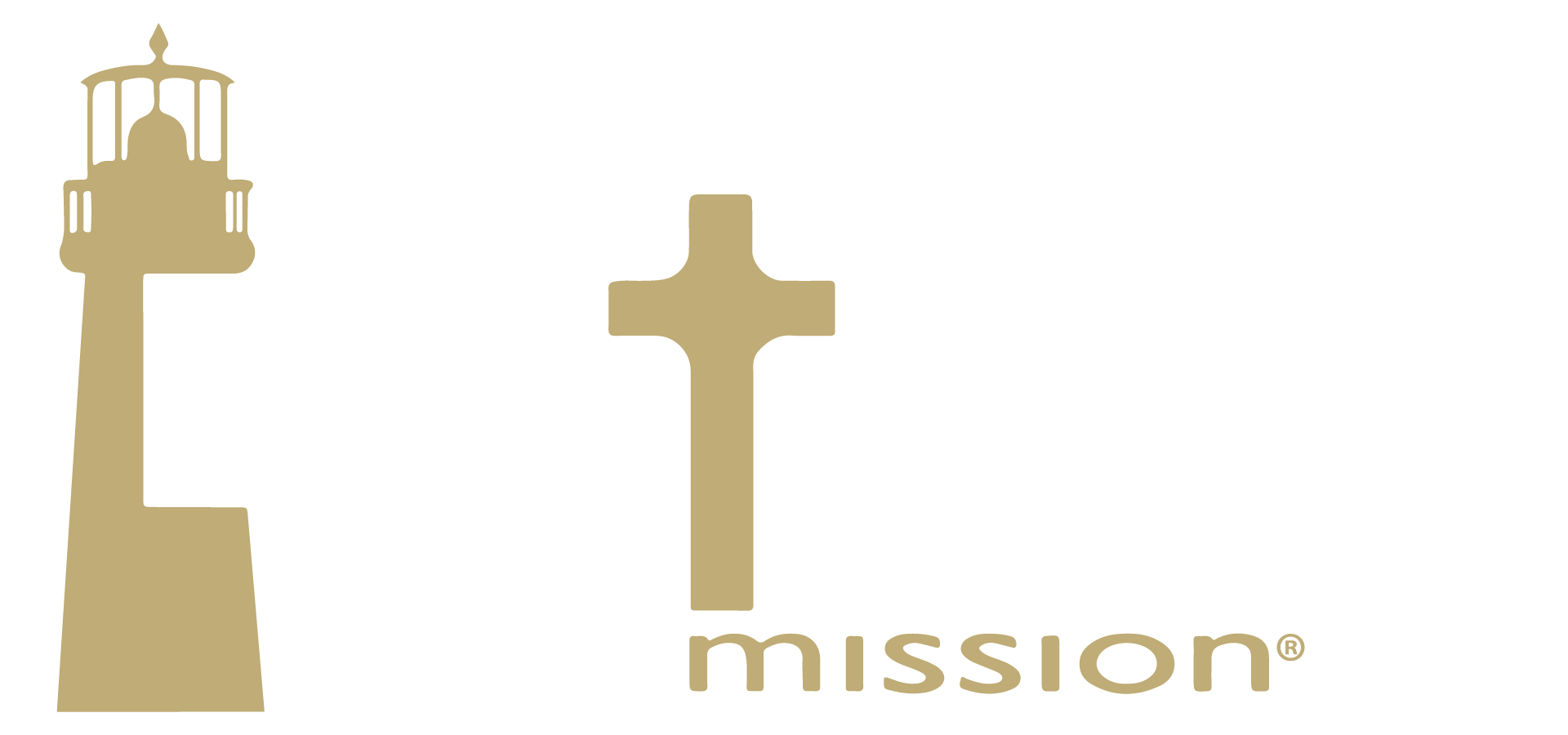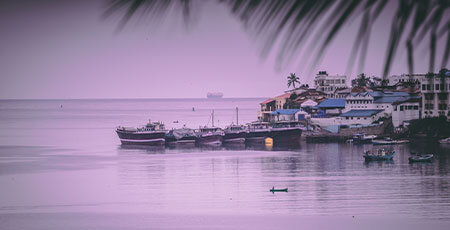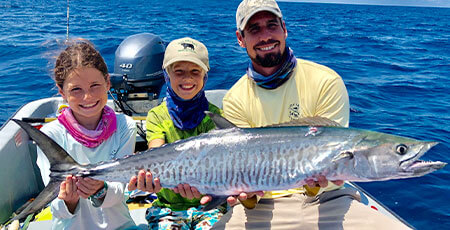About Kenya
KENYA FACTS
Kenya is situated in East Africa and provides the globe’s most magnificent game parks, unsullied beaches, thriving coral reefs, memorable mountains capes, and ancient Swahili cities. The flora and fauna is awesome. Animals include lions, leopards, cheetahs, elephants, rhinos, cape buffalo, warthogs, zebras, giraffes, hyenas, gazelles, monkeys, wildebeests, and many others.
Click here to learn more about Kenya from the official Kenya Tourism Board.
COUNTRY NAME & Capital
Full Country Name | Republic of Kenya
Capital | Nairobi
Area & Provinces
Area | 583,000 sq km or 225,000 sq miles (about the size of Texas)
Provinces | Kenya now has 47 county governments which formerly made up the 8 Coast Provinces.
National Flag
Three major and equal width stripes of black, red and green colors running from top to bottom and separated by narrow white stripes, with a symmetrical shield and white spears superimposed centrally. Black represents the people of Kenya. Red represents the blood shed in the fight for independence. Green represents the fertility of the land. White represents peace. The shield of the warrior represents Kenya’s pride and tradition
Population
Population | 43.2 million
Population of age less than 15 | 50%
Fertility & Mortality Rates
Fertility Rate | 2.9 urban & 5.2 rural children per woman
Infant Mortality Rate | 57 per 1,000 live births

Mombasa
Chief seaport of Kenya, capital of Mombasa County, on a bay of the Indian Ocean, just south of the equator. The fast-growing city serves as a port for northeastern Tanzania and landlocked Uganda. It includes Old Mombasa, located on a small offshore island (16 sq km/6 sq mi—where Lighthouse is located), and a larger, more modern mainland metropolitan area, which is connected to the island by causeway, bridge, and ferries. Kilindini, a modern deepwater harbor on the western side of the island, has extensive docks, shipyards, and sugar and petroleum refineries. Old Mombasa Harbour, on the eastern side of the island, handles mainly dhows and other small coastal trading vessels.
Mombasa was founded about the 8th century by Arab traders. It was visited in the 1330s by the noted Arab traveler Ibn Batuta and in 1498 by the Portuguese explorer Vasco da Gama. Mombasa later changed hands several times before coming under the control of the sultan of Zanzibar in 1840. It passed to the British in 1895 and was the capital of the British East Africa Protectorate until 1907. It was made the capital of the coastal Protectorate of Kenya in 1920, and in 1963 under the leadership of Jomo Kenyatta, (originally named Johnstone Kamau) who was the leader of the Kenya African National Union, Kenya was granted independence on December 12th and Mombasa became part of newly independent Kenya (which includes the former protectorate and colony of Kenya). Mombasa has often been a port of call for American naval vessels. Population is estimated at about 1.5 million. Under the presidency of Kenyatta, Kenya developed into one of Africa’s most stable and prosperous nations. After Kenyatta’s death in 1978 came Daniel Arap Moi, a member of the Tugen tribe. The current President of Kenya is Uhuru Kenyatta, grandson of Kenya’s first President Jomo Kenyatta.
Mombasa is the largest port on the coast of East Africa. It is hot, steamy and full of history. A fascinating place to visit is Fort Jesus. It is now a museum and contains a mixture of Italian, Portuguese and Arabic design.
Mombasa
Chief seaport of Kenya, capital of Mombasa County, on a bay of the Indian Ocean, just south of the equator. The fast-growing city serves as a port for northeastern Tanzania and landlocked Uganda. It includes Old Mombasa, located on a small offshore island (16 sq km/6 sq mi—where Lighthouse is located), and a larger, more modern mainland metropolitan area, which is connected to the island by causeway, bridge, and ferries. Kilindini, a modern deepwater harbor on the western side of the island, has extensive docks, shipyards, and sugar and petroleum refineries. Old Mombasa Harbour, on the eastern side of the island, handles mainly dhows and other small coastal trading vessels.

Mombasa was founded about the 8th century by Arab traders. It was visited in the 1330s by the noted Arab traveler Ibn Batuta and in 1498 by the Portuguese explorer Vasco da Gama. Mombasa later changed hands several times before coming under the control of the sultan of Zanzibar in 1840. It passed to the British in 1895 and was the capital of the British East Africa Protectorate until 1907. It was made the capital of the coastal Protectorate of Kenya in 1920, and in 1963 under the leadership of Jomo Kenyatta, (originally named Johnstone Kamau) who was the leader of the Kenya African National Union, Kenya was granted independence on December 12th and Mombasa became part of newly independent Kenya (which includes the former protectorate and colony of Kenya). Mombasa has often been a port of call for American naval vessels. Population is estimated at about 1.5 million. Under the presidency of Kenyatta, Kenya developed into one of Africa’s most stable and prosperous nations. After Kenyatta’s death in 1978 came Daniel Arap Moi, a member of the Tugen tribe. The current President of Kenya is Uhuru Kenyatta, grandson of Kenya’s first President Jomo Kenyatta.
Mombasa is the largest port on the coast of East Africa. It is hot, steamy and full of history. A fascinating place to visit is Fort Jesus. It is now a museum and contains a mixture of Italian, Portuguese and Arabic design.


